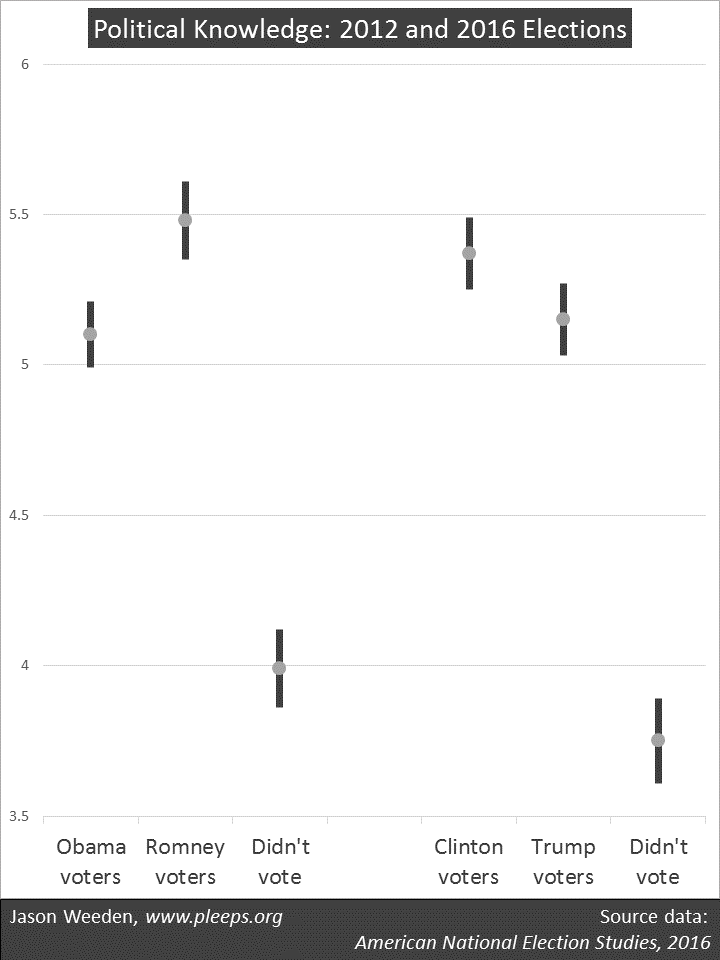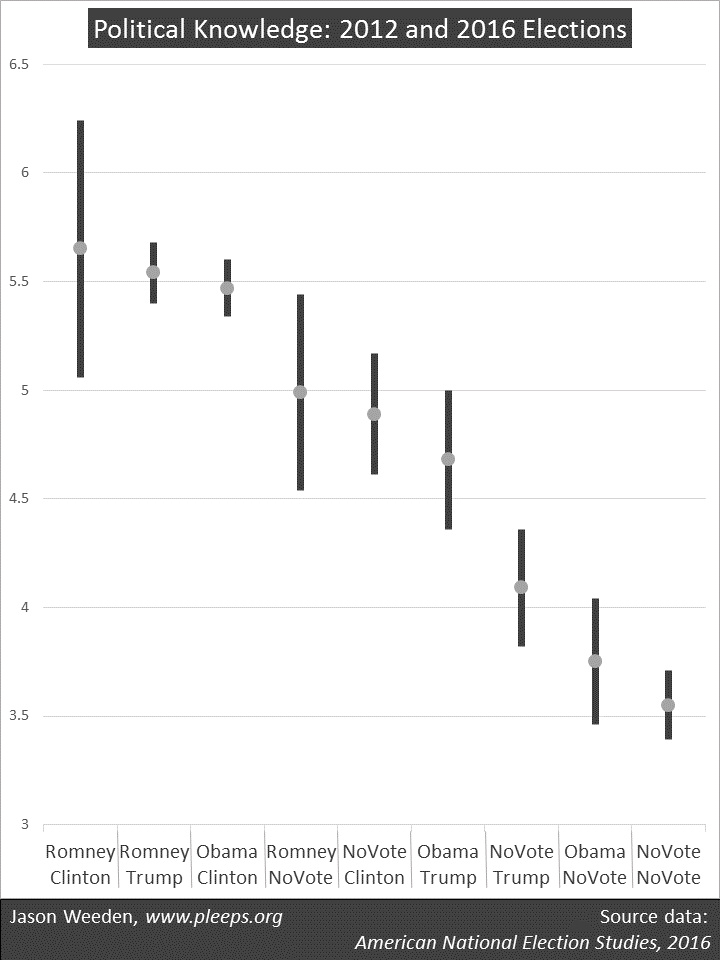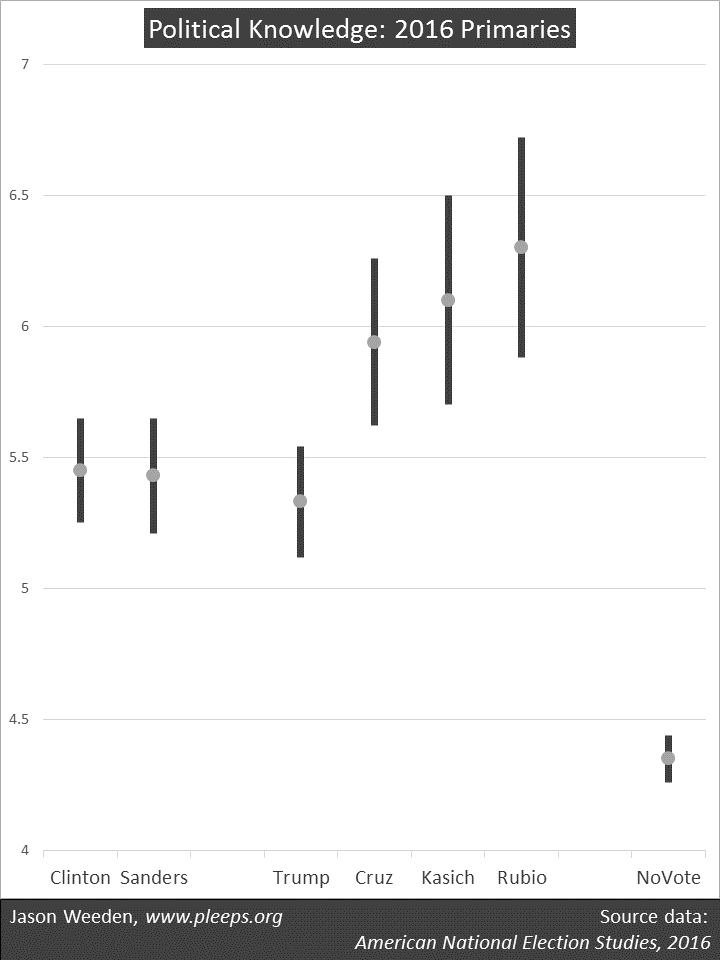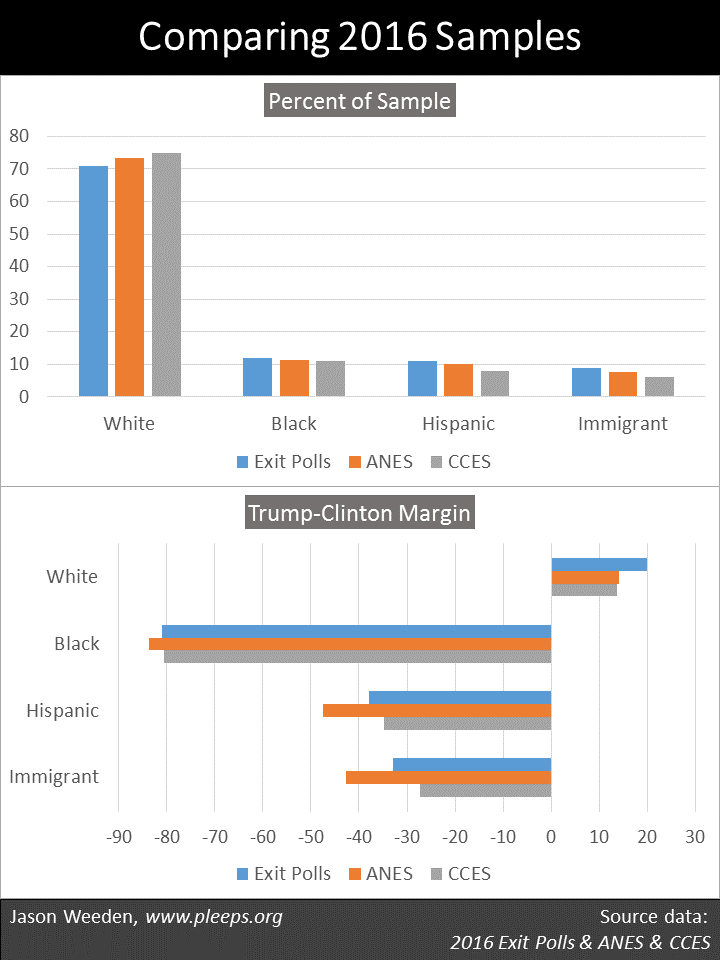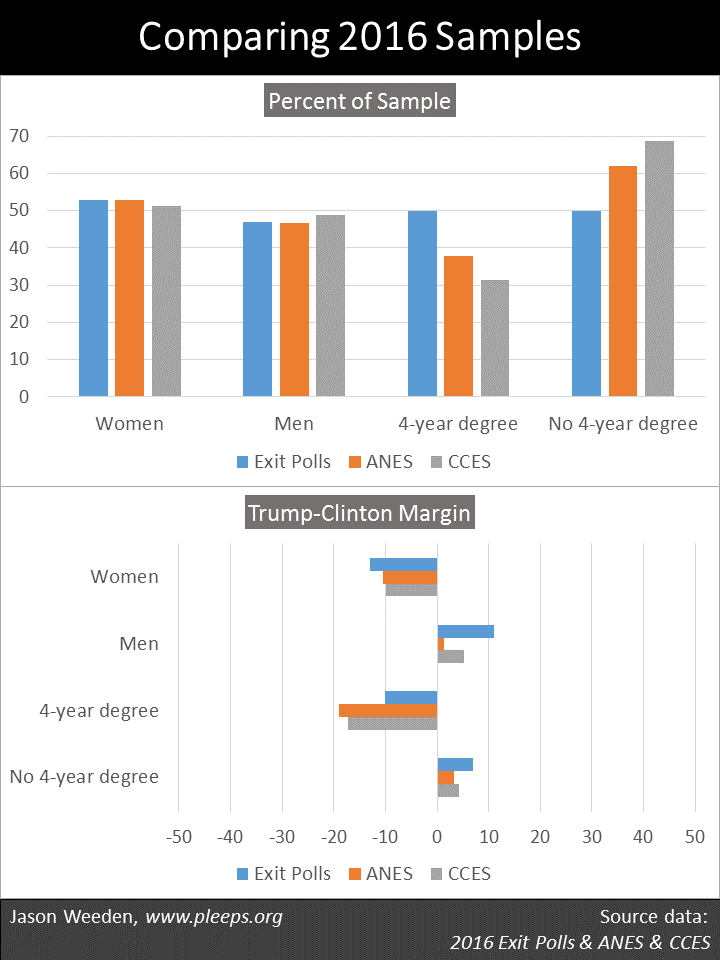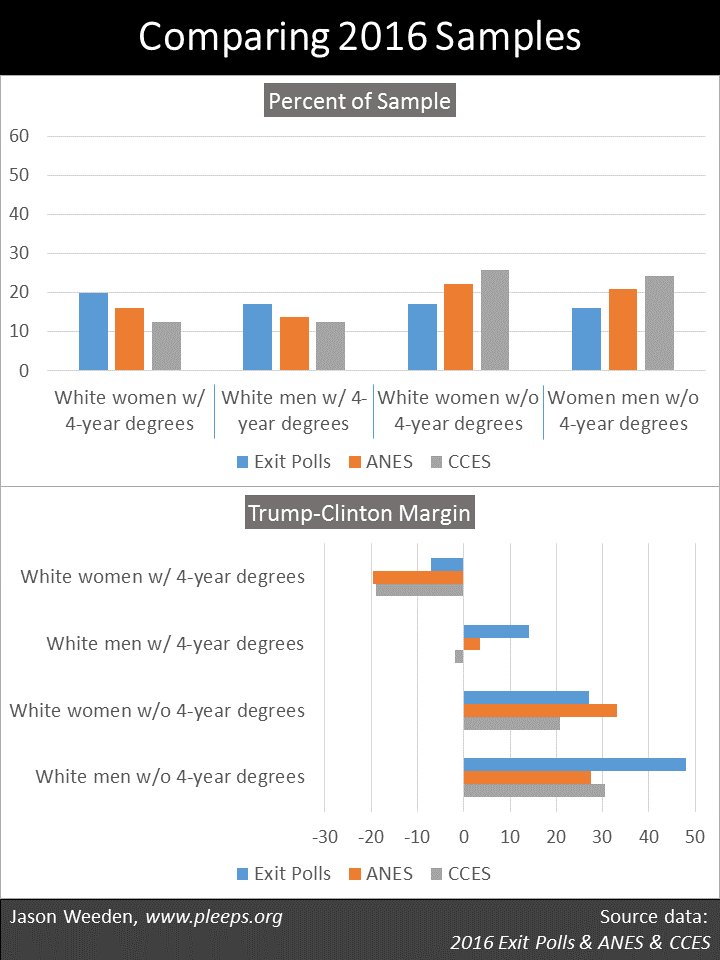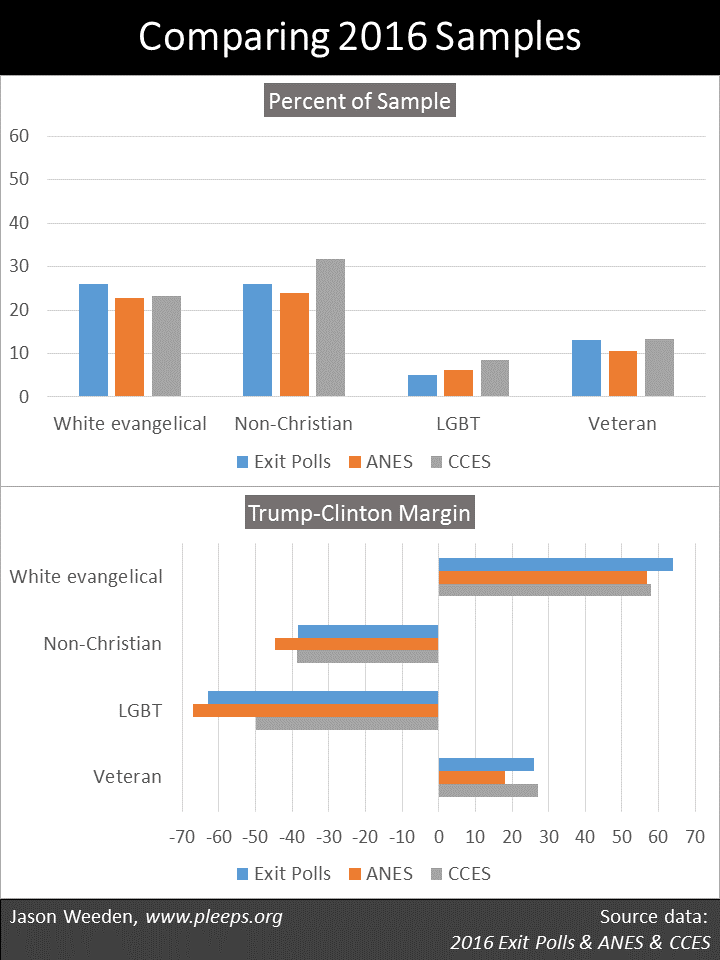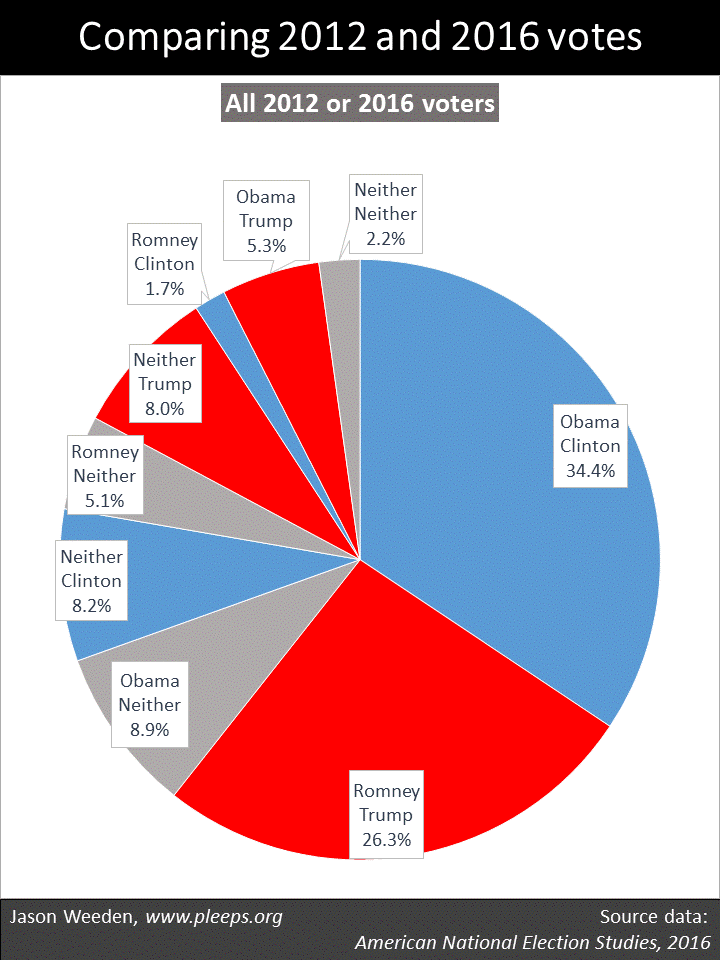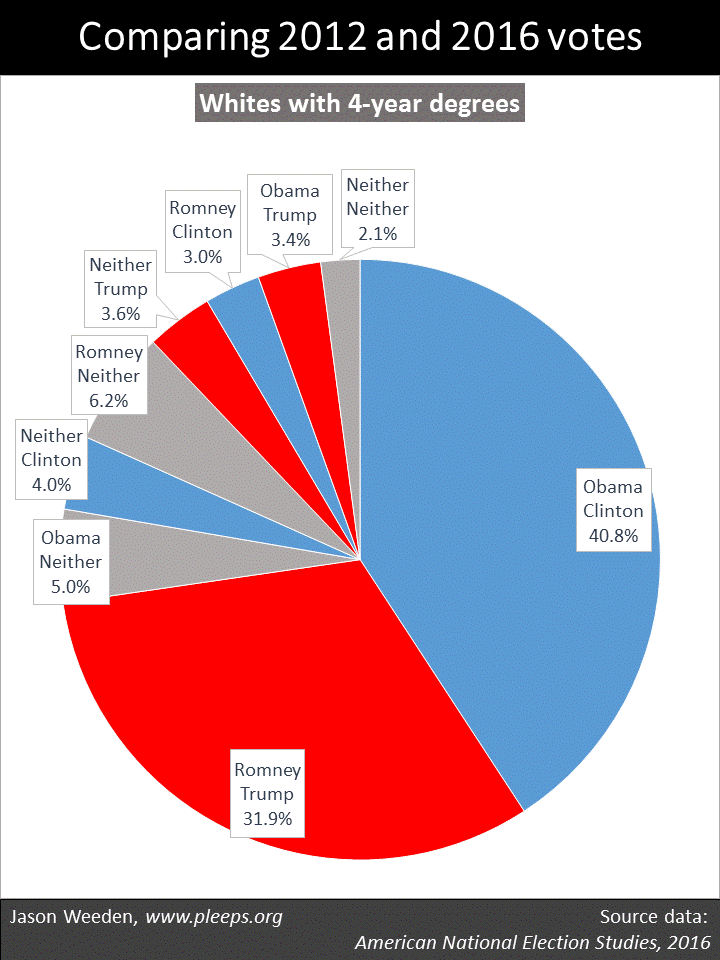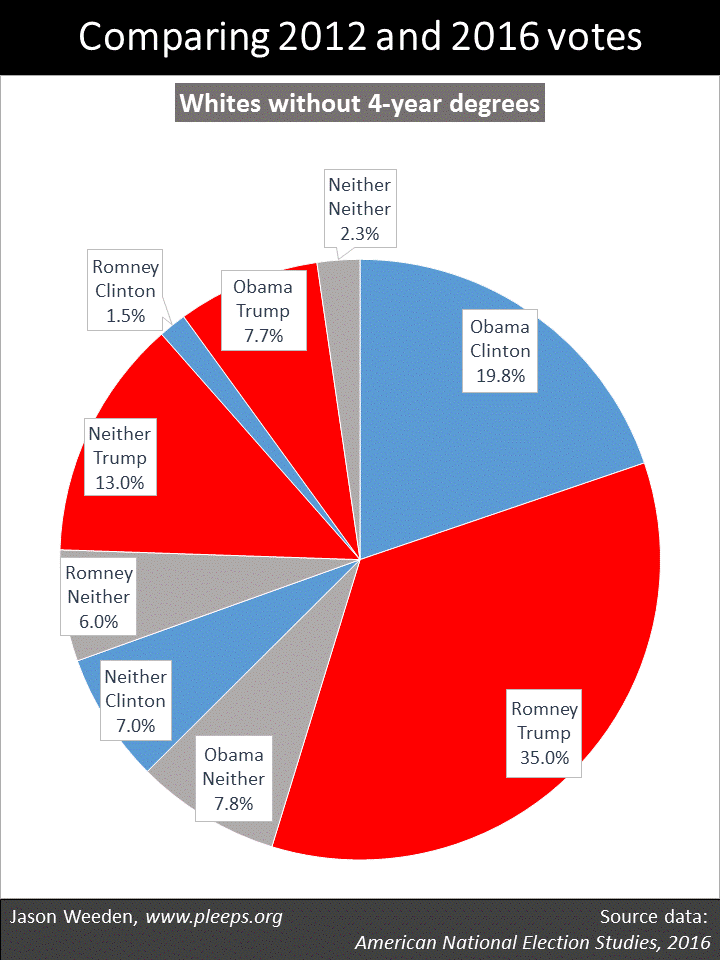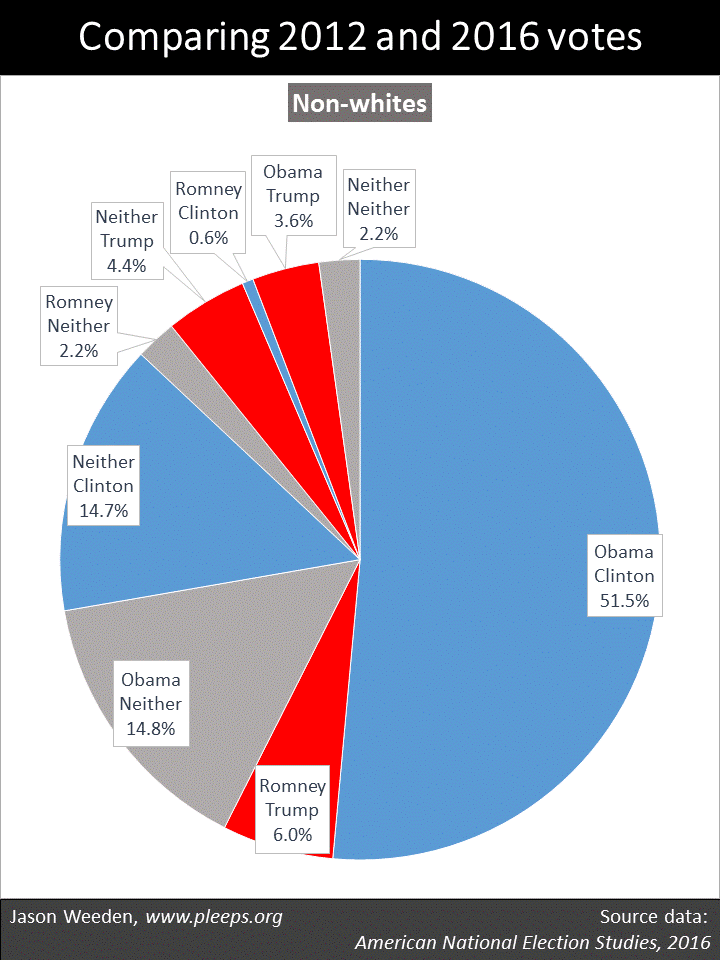Back in the Eisenhower years (1953 to 1960), the U.S. electorate was over 90% white and over 90% Christian. These days, it’s closer to 70% white and 70% Christian, with people who are both white and Christian comprising just about half of potential voters.
Currently, white Christians are mostly Republicans while non-whites and non-Christians are mostly Democrats. If you were to project these modern political coalitions backward in time, you’d expect that the mid-1950s were years when the large majority of people voted Republican. But it wasn’t the case. Eisenhower himself was a Republican, but in six of his eight years both the House and Senate were controlled by Democrats.
The key, of course, is that Republicans haven’t always gathered their support from white Christians generally. Back in the 1950s, white Southerners and white Catholics were mostly Democrats. Republicans were primarily white Protestants outside the South.
Over time, however, things changed. Democratic support for the Civil Rights Acts in the 1960s contributed both to blacks becoming more solid Democratic supporters and to white Southerners moving towards Republicans. Then the slow evolution of Republicans into the party of “family values” since the 1980s led to additional movements among white, churchgoing Christians, including lots of Catholics and Southern evangelicals.
Let’s take a look at some of that. The chart below uses American National Election Studies (ANES) data from the 1950s to 2016. My “partisanship” measure combines self-labelled party identification with reported votes for president, house, and senate—so, the biggest Democrats here not only identify as Democrats but also turn out and vote for Democrats, and the same for Republicans.
I looked at ANES variables on race, religion, and region, and made splits that were big deals in predicting partisanship over time. The first splits were by race: non-Hispanic white vs. non-Hispanic black vs. Hispanic/Asian/other. Then I split whites into Protestants vs. Jews vs. “other religion” (which includes Catholics, “nones,” those in various minor religions, and also various Christians who don’t think of themselves as either Protestant or Catholic). Then I split white Protestants by South vs. not South and weekly church attendance vs. less than weekly. And I split the “other religion” folks into monthly attendance vs. less than monthly attendance—the large majority of the monthly attending folks here are Catholics and other non-Protestant Christians, while the less-than-monthly folks are a mix of “nones” and low-attending folks who nonetheless retain a religious identity.
The chart has a lot going on, but it’s not that complicated in the end. The different colors represent the different demographic groups. The size of the circles show the relative size of the groups in various years (so, e.g., you can see from the size of the red circles that the electorate used to have very few Hispanics/Asians/others but now it has quite a lot, approaching 20% in the 2016 ANES sample). The left-to-right position is the degree of Democratic vs. Republican partisanship (so, e.g., if you look at the recent years up top, you can see that blacks are especially strong Democrats while white, Protestant, Southern churchgoers are especially strong Republicans).
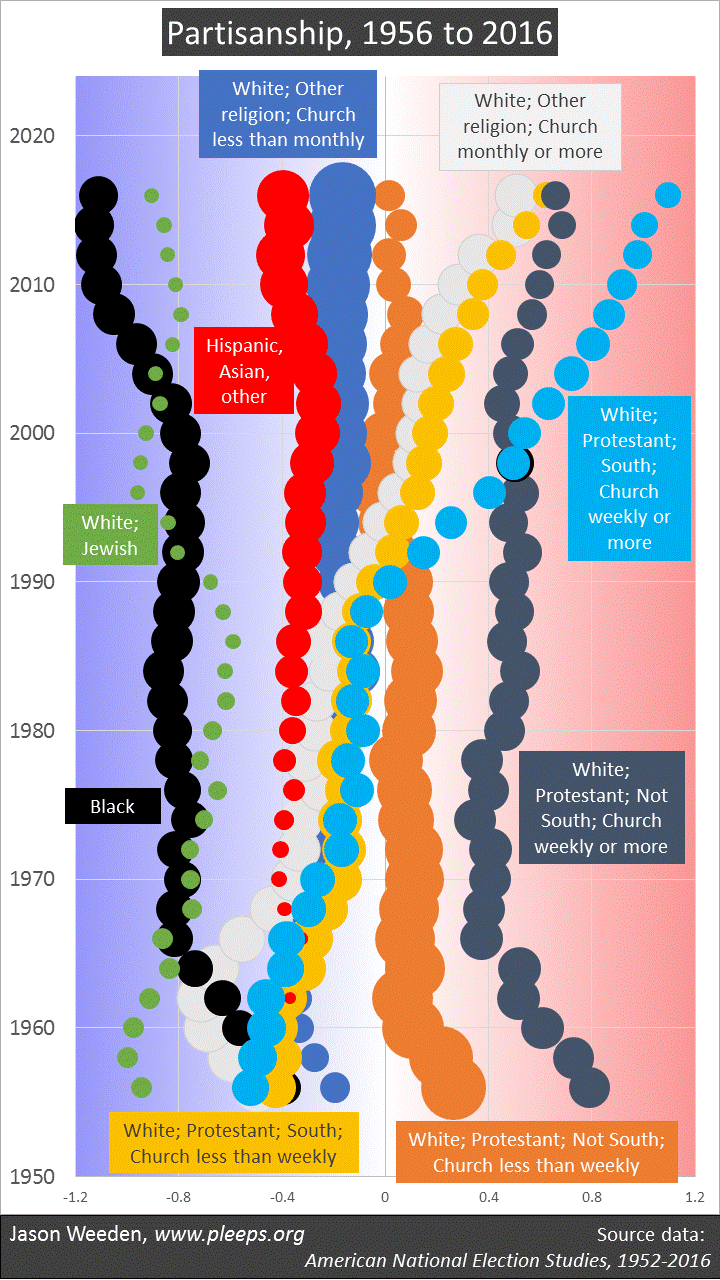 (Note: To smooth things out, the displayed results are based on averages of the relevant year along with the surrounding years—so, e.g., the earliest year, 1956, is based on averaging ANES data from 1952 to 1960. The exception is 2016, where I obviously didn’t have future data to average, so it’s mostly just based on 2016 data. One implication of this is that a sudden shift that occurs in Year X would actually start showing up on the chart a bit before that, and won’t fully appear until a bit after.)
(Note: To smooth things out, the displayed results are based on averages of the relevant year along with the surrounding years—so, e.g., the earliest year, 1956, is based on averaging ANES data from 1952 to 1960. The exception is 2016, where I obviously didn’t have future data to average, so it’s mostly just based on 2016 data. One implication of this is that a sudden shift that occurs in Year X would actually start showing up on the chart a bit before that, and won’t fully appear until a bit after.)
If we start at the bottom of the chart in the mid-1950s, Republicans were mostly white Protestants from outside the South and Democrats were a hodge-podge of Jews, those in other religions or no religion (back then, this was mostly Catholics), non-whites, and Southern Protestants. Through the 1960s, as Democrats moved left on civil rights, blacks became very solidly Democratic and non-Southern white Protestants became less solidly Republican, while Southern white Protestants became less solidly Democratic.
Things were pretty stable for these various groups from 1970 to 1990, but then big shifts kicked in as white Protestants, churchgoers, and Southerners continued moving towards Republicans. These were the years when Republicans became paradigmatically home to white evangelicals, something that is as true today as it has ever been. In addition, the Bush II and Obama years saw further gains for Democrats among non-whites.
I’m just looking at race, religion, and region in this analysis. There are more details, obviously—income, gender, age, union membership, and so on. And, of course, the most recent election saw real splits along educational lines, especially among whites. But, still, race, religion, and region are, as far as I know, among the biggest demographic deals over this time period.
Can we know what’s coming?
Whenever I look at historical data like this—on politics, fertility, employment, religion, or whatever—I’m always struck by the tremendous uncertainty of projecting future long-term trends. I imagine someone looking at the massive downward fertility trends in the early 20th century trying to predict the mid-century Baby Boom. I imagine someone looking at the massive upward trend in prime-age women’s labor participation in the second half of the 20th century trying to predict that it would peak in 2000 and then decline. The next time you see, for example, projections of worldwide religion and fertility trends out to 2060, think about what such projections about 2016 would have looked like had we made them in 1972.
Such uncertainty is no less potent when it comes to political party coalitions. These coalitions are cobbled together and evolve in ways that rely on a variety of not-at-all-inevitable circumstances. For instance, six months ago the U.S. had a presidential election that given any one of a hundred subtle differences might have come out the other way—not quite as purely coin-tossy as 2000, but still. And the 2016 election involved complex changes from 2012, some from party switching but perhaps more so from differences in turnout.
Estimating how these kinds of complex matters might develop over longer timeframes involves a number of known unknowns and unknown unknowns. Such efforts are entertaining, to be sure, but it’s a little crazy to actually believe any of them.

